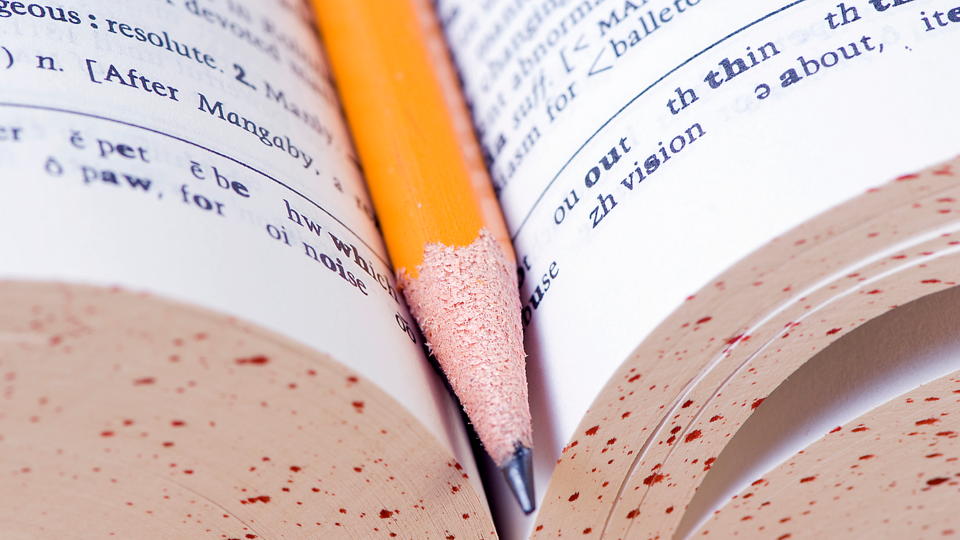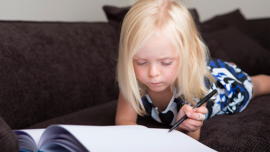Spelling, schmelling

In the age of spell-check, autocorrect, voice recognition and text messaging, does spelling still matter?
In the age of spell-check, autocorrect, voice recognition and text messaging shorthand, does spelling still matter? Many agree that it still does. The Internet is filled with examples of how spell-check and autocorrect can result in unfortunate blunders. Smart phones can misinterpret voices, and text shorthand can be inconsistent or downright cryptic. Educational research provides even more support for keeping an eye on your child’s spelling development.
Spelling helps reading
Studies show that teaching spelling skills can improve word reading ability. Teaching children how words are spelled reinforces the connections between letters and sounds. When children recognize these letter-sound relationships, they can more easily read words that contain the spelling patterns they are learning. In fact, to spell and read words accurately, children apply the same knowledge of letter-sound relationships, so practice in one helps build skills in the other. Interestingly, research has shown that practice at spelling helps reading more than practice at reading helps spelling.
Activities that help build spelling skills
It’s important to keep in mind that becoming a good speller is not just about memorizing words. It’s about developing an understanding of spelling patterns and how words work. Rather than simply writing words several times, your child can improve spelling skills with activities that involve comparing words and noticing patterns.
Word sorts
Give your child a set of cards with words that represent 2 or 3 spelling patterns. For example, you might have 9 cards with the following words from the -at, -et and -op word families: bat, rat, mat, let, set, met, hop, mop, top. Set out 3 words, one from each word family, and have your child sort the remaining 6 cards into the correct columns. At the end, there should be one column with bat, rat and mat, a second column with let, set and met, and a third column with hop, mop and top.
Word hunts
Have your child try to find words that match a spelling pattern they are learning. For example, if your child has just learned to spell the word “team,” challenge him or her to find other words that end with –eam in books they are reading, signs they see and so on.
Sight word and high-frequency word games
Did you know that 13 words make up more than 25% of words in print? They are a, and, for, he, is, in, it, of, that, the, to, was and you. And 100 words account for almost 50% of words in print. Some of these high-frequency words (like the, was, were) are called sight words because they contain irregular spelling patterns and must be memorized and recognized by sight. The following activities can help your child spell sight words:
- Sight word memory game: Write sight words on index cards. Make a second set of cards with the same words. With your child, set the cards face down and take turns turning over and reading two cards at a time. If you get a matching pair, you get to keep the cards. Keep playing until all of the cards are collected.
- Sight word flashcards: Write a sight word on one side of an index card. Then help your child create a sentence using that word to write on the other side of the card. Using this set of flashcards, your child can focus on the spelling of sight words in isolation and in the context of a meaningful sentence.
- Sight word shapes: Using graph paper, make outline shapes of sight words your child is learning to spell. For example, the shape below fits the word “the,” with the “t” in the first two cells, the “h” in the next two cells, and the “e” in the final cell. Give your child a list of the words that fit in the shapes you made and have them write the word in the shape space.
“How do you spell… ?”
When your child gets stuck spelling a word as he or she writes, try these responses.
- If the word has a predictable spelling, try “Say the word slowly. Stretch it out. What sound do you hear first? What sound do you hear next?” And so on.
- If the word has irregular spelling patterns, but it is a familiar word to your child, try “Can you picture the word? Can you see it in your mind? How does it look?”
References:
Templeton, S., & Morris, D. (2000). Spelling. In M.L. Kamil, P.B. Mosenthal, & P.D. Pearson (Eds.), Handbook of reading research volume III. (pp. 255-544). Mahwah, NJ: Lawrence Erlbaum.
Ehri, L.C. (2000). Learning to read and learning to spell: Two sides of a coin. Topics in Language Disorders, 20, pp 19–49.
Snow, C. E., Griffin, P., & Burns, M. S. (2005). Knowledge to support the teaching of reading: Preparing teachers for a changing world. San Francisco, CA: Jossey-Bass.
Johns, J. L. 1980. First-graders’ concepts about print. Reading Research Quarterly 15.












